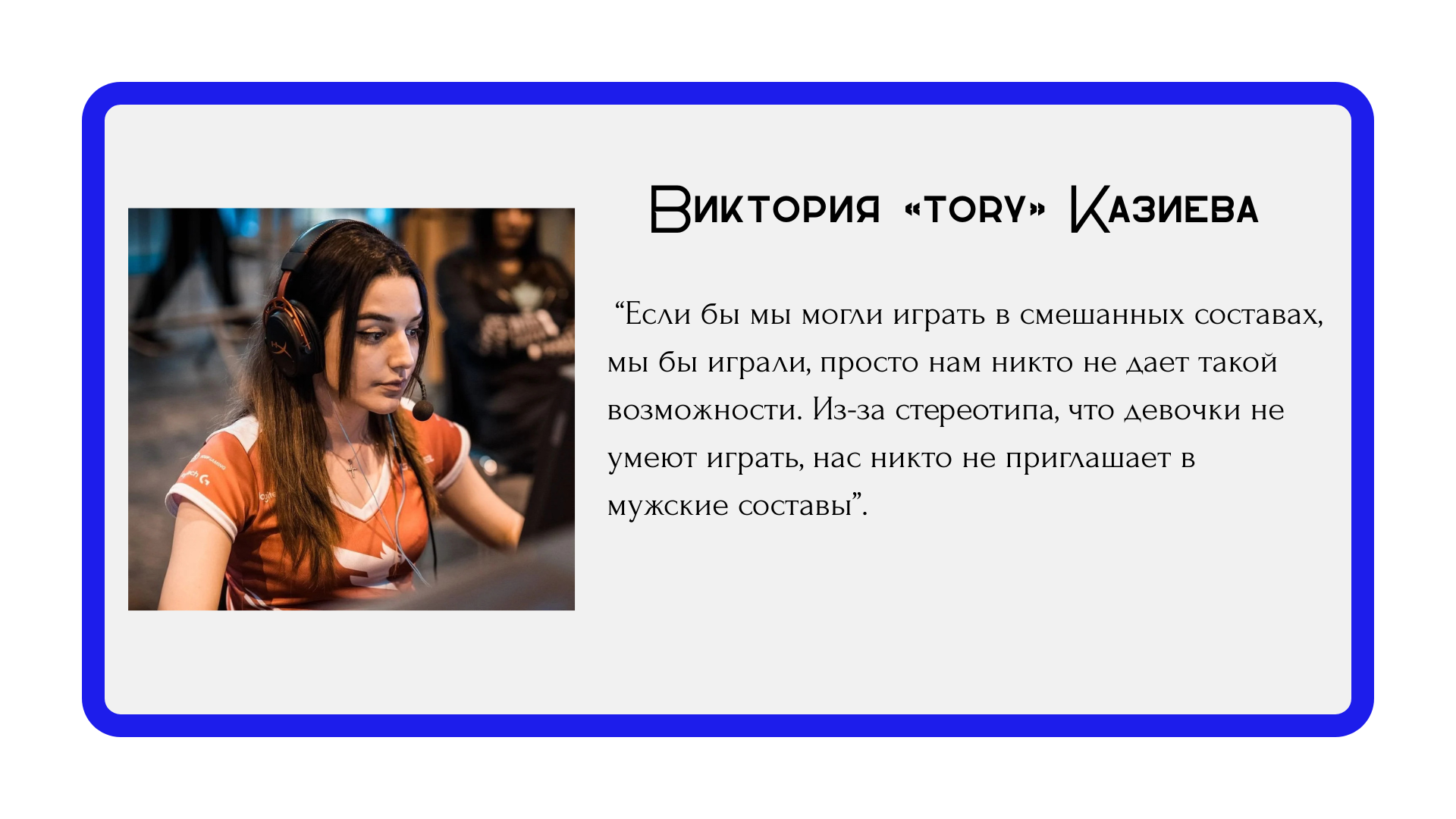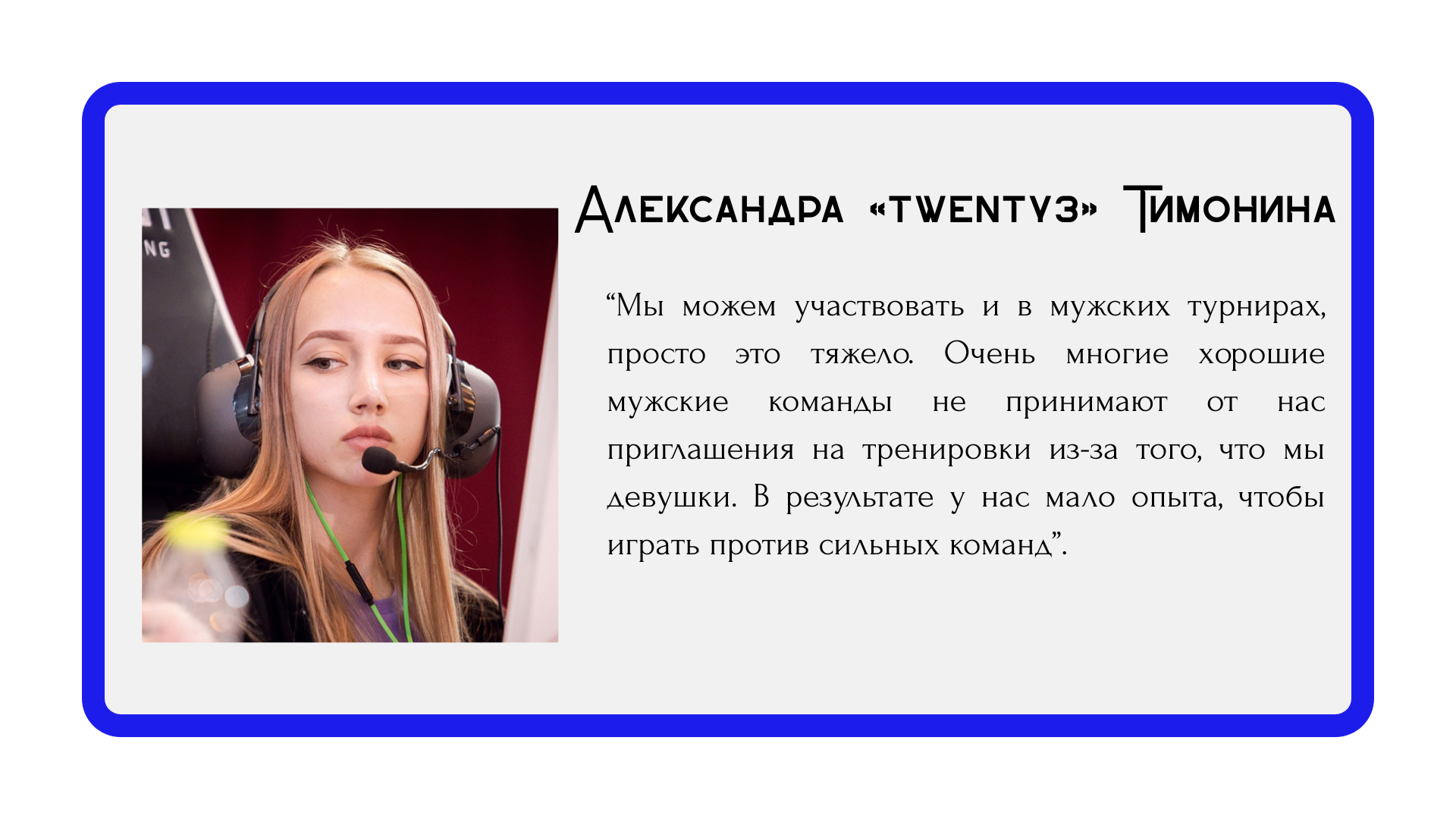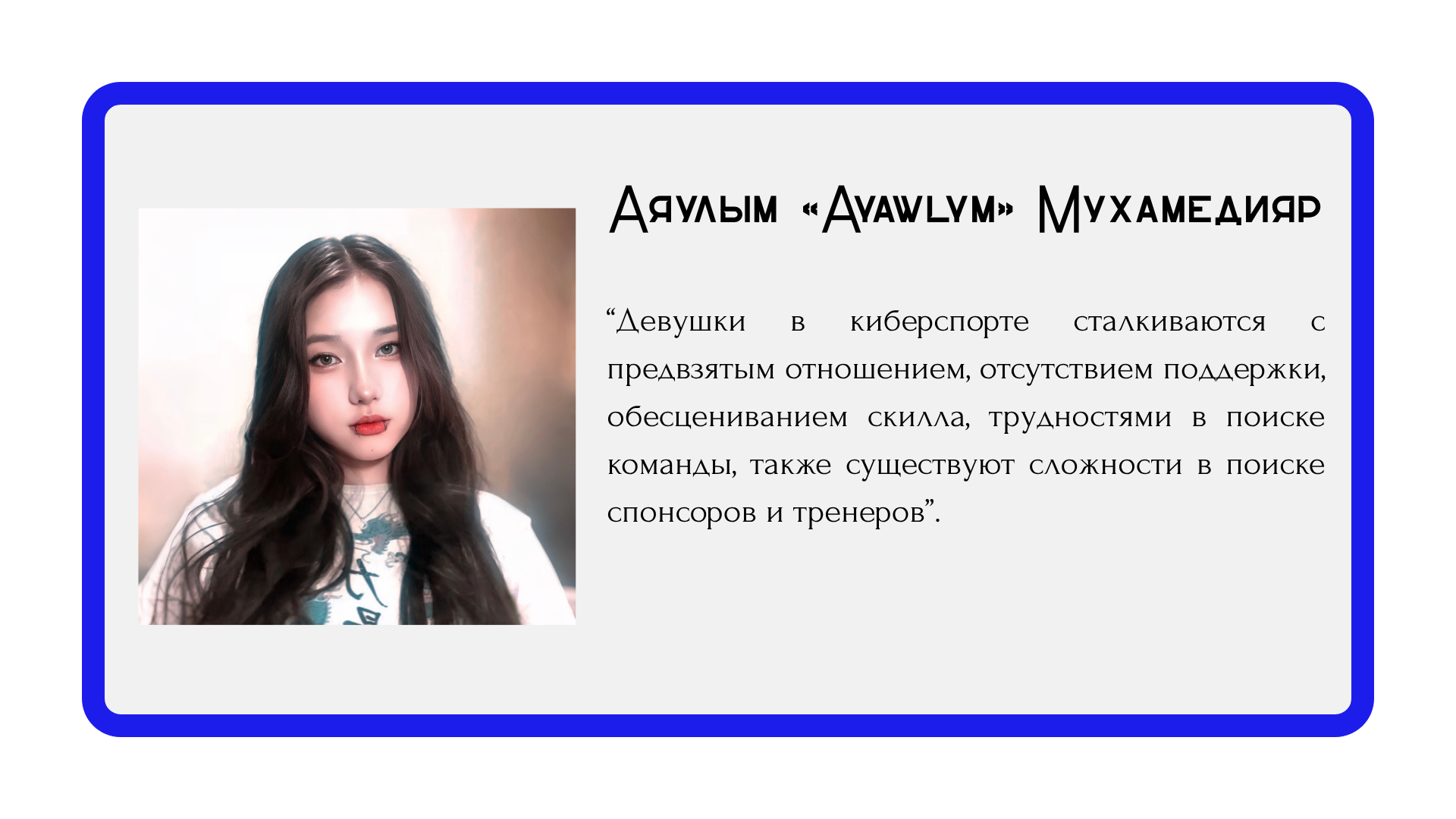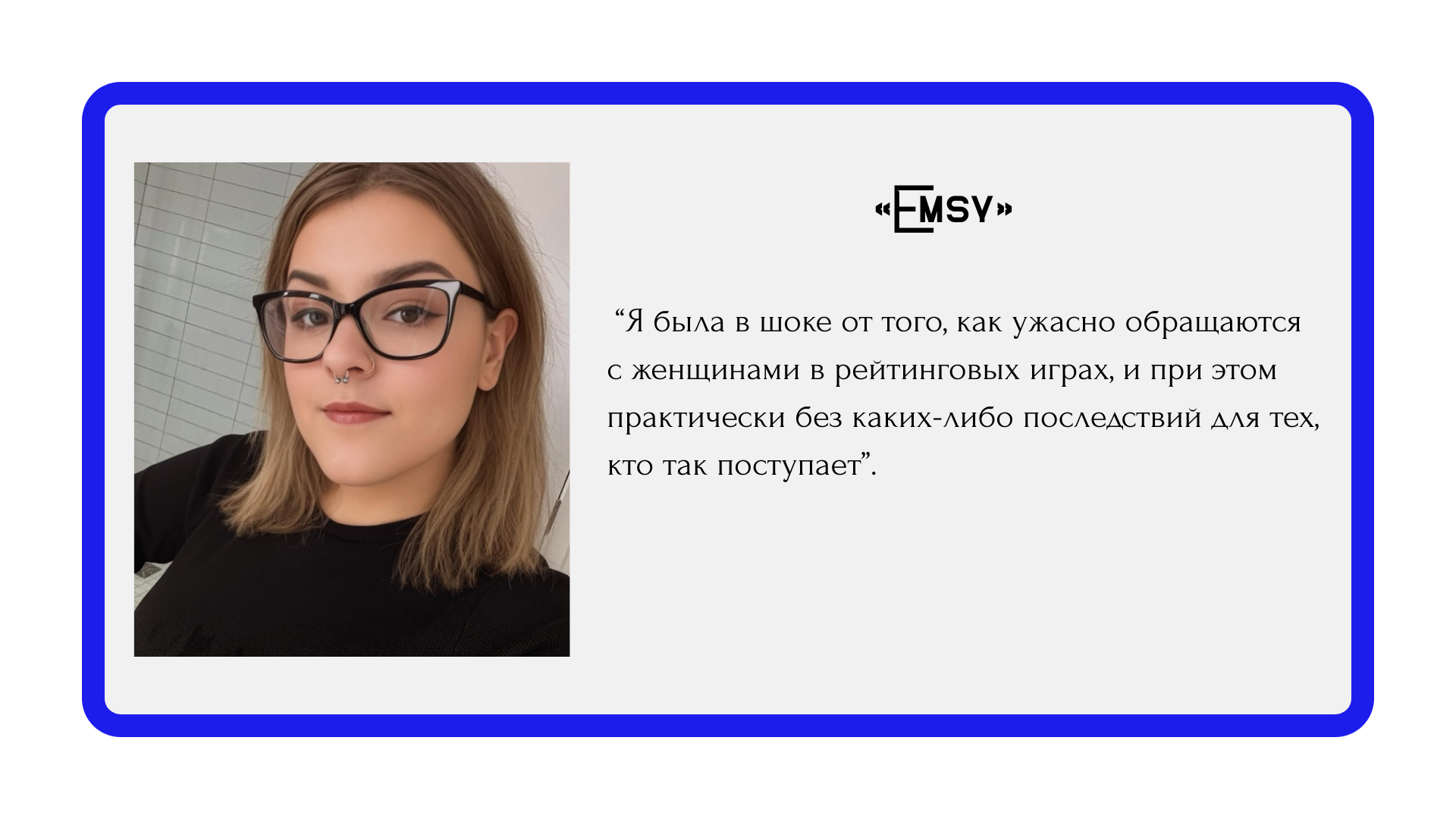The Phenomenon of Female Gaming
— "You play well... for a girl."
— "Play Sims and stop whining."
— "Pick support, you're not meant for any other role."
If you are a girl who has ever seriously played shooters, tried hard in ranked MOBA, or simply used a microphone in a match for information – these phrases are most likely familiar to you. Female gaming nowadays grows through hate, distrust, fatigue, and even self-sabotage.
According to statistics from "Deloitte" and research from "Digital Razor," women make up half of the gaming audience and have long since caught up with the number of men. They also take clutches in shooters, carry games in MOBAs, and secure top spots in battle royales. They are everywhere.
Except, apparently, at the very top.
Professional leagues, qualifiers for major tournaments, logos of leading teams, collaborations with big brands, large prize pools – all of this most often goes exclusively to male esports. On the pro scene, girls make up only 10-15% of players, and in most cases, these are separate female rosters. Tournaments for the women's league still look like a closed club: a minimal number of competitions, small prize pools, a lack of major investments, and hate towards female esports players.
In the 90s, Stevie Case, one of the first girls in the world of esports, playing the shooter "Quake," already understood what she was about to face. After every match, her victories were devalued: "She's just lucky," and she was invited to tournaments as a "girl-gamer," which was unusual at the time, but not as an esports player.
More than 30 years have passed, and we continue to hear the same things. Now – in Twitch chat, PUBG voice chat, CS:GO, Dota 2. All of this is not about a specific discipline or tournament. It's about a general feeling: when women are distrusted in advance and not represented on the esports stage.
The "Silent Revolution" of female esports happened in 2024 at the prestigious IEM Katowice tournament. The Imperial Female team entered the stage and played on equal terms against male rosters without any demands for "special conditions." And they did so with dignity. Their matches attracted tens of thousands of viewers to the broadcasts, and many analysts emphasized: this was not an act of protest, but a beautiful game for victory.
Forbes Woman subsequently interviewed two players from this team, who, incidentally, answered questions related to the problems of female gaming, and here's how the girls commented on the division of tournaments into male and female:


We conclude that despite playing at a top CS:GO tournament, the girls from Imperial Female still face biased attitudes, masked as "practicality." Male rosters often justify refusing to train by saying it's "unprofitable" and "uninteresting" to work with female esports players – because they are weaker and won't provide the necessary challenge, "it's not tournament preparation."
When it comes to barriers, it's important not to succumb to false idealization. Female teams and communities can also be imperfect. As in any other environment, there are conflicts, dissatisfactions, and misunderstandings – and, unfortunately, sometimes this undermines the growth of female esports from within.
Female stacks sometimes break up not due to external pressure, but due to internal tensions. In mobile esports, there have been cases where teams refused to participate in tournaments due to disagreements over "player cards" with unretouched photos. On various platforms, you can find information on even more complicated situations: loud conflicts, leaks of personal information, discussions about gender identity and tournament eligibility. Nevertheless, this is not a reason to abandon the development of female esports, but it needs enhanced discipline, conflict resolution practices, and good managers.
It seems there are more opportunities today. The path for girls in esports is still connected not only with training and teamwork, but also with what remains behind the scenes – hate, doubts, biased attitudes. One of the participants in the female MLBB scene talks about this:

Teen Vogue told the story of Emsy — an esports athlete and member of Team Liquid, one of the most recognized organizations on the global stage. Outwardly, the girl seems confident, strong, and determined, but her path to this confidence was not easy.

After the esports player overcame her fear of voice chat, her approach became simple: to teach girls to play like real players. With map awareness, smart positioning, confidence in retakes, and most importantly — with a voice that won't tremble when entering Discord.
While the breakthrough is just gaining momentum in the CIS region and Europe, stable formats are already being built in the gaming industry in the USA. A vivid example is the platform the*gamehers. This is not just a community:
- it hosts online and offline tournaments,
- a mentorship and career navigation program operates,
- events and training courses are organized,
- grants and scholarships exist for girls who want to connect their lives with gamedev or esports.
It is indicative that this platform is supported not only by tech companies but also by unexpected participants — for example, Burberry. Yes, that very British brand with the plaid pattern. They not only invest in promotion but also finance real programs for aspiring female gamers and content creators.
Female gaming and esports is a movement that grows, makes mistakes, argues with itself and with the world. Where on one side there are real successes, first arenas, spectators, brands, and on the other — internal conflicts, burnout, and difficult conversations about boundaries and rules. Nevertheless, a true community is not where everything is smooth, but where people don't give up and learn from mistakes. But it is precisely in all of this — that there is growth.
0 comments